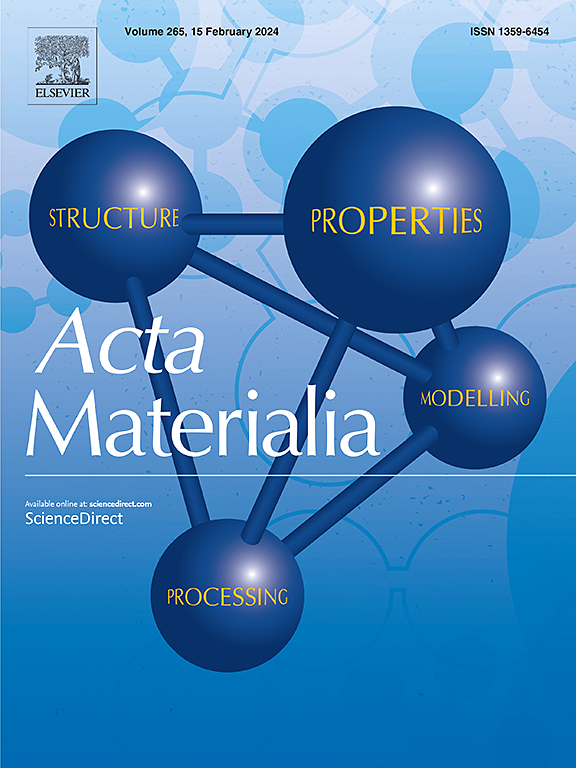Geometrically Morphological Theory in predictions of dendritic shapes with six-fold crystalline symmetry
IF 9.3
1区 材料科学
Q1 MATERIALS SCIENCE, MULTIDISCIPLINARY
引用次数: 0
Abstract
Motivated by important applications in materials physics, we study the shape of dendritic crystals with six-fold crystalline symmetry grown in aqueous solutions of various substances and pure water. Based on recently developed Geometrically Morphological Theory [Philos. Trans. R. Soc. A 378 (2020) 20190243; Phys. Lett. A 501 (2024) 129375] we demonstrate that the shape of the main stem and internal/external envelope in the secondary branches of dendrite at the steady-state growth mode is described by the scaling law with the values of exponent and for ice dendrites growing in solutions of Secale cereale, glucose, sucrose and pure water. In addition, by changing the crystalline symmetry from six- to four-fold, the scaling law exponent and the crystallographic growth direction change from to and to , respectively. The evolutionary route of how dendrites reach steady-state growth velocity is also described by supporting and finding parameters from laboratory experiments.


六重晶体对称树突形状预测的几何形态学理论
由于材料物理学的重要应用,我们研究了在各种物质和纯水的水溶液中生长的具有六重晶体对称的枝晶晶体的形状。基于最近发展的几何形态理论[Philos]。反式。r . Soc。a378 (2020) 20190243;理论物理。列托人。短句来源[501(2024)129375]证明了在稳态生长模式下,冰枝的主干和次级分支的内外包膜的形状可以用标度定律z(x)∝- |x|nz(x)∝- |x|n来描述,其指数为n=3.0n=3.0和n=1.0n=1.0。此外,通过将晶体对称从六重变为四重,标度律指数和晶体生长方向由n=1.0n=1.0变为n=1.164n=1.164和<;110><110>;分别到<;100><100>;。树突如何达到稳态生长速度的进化路线也通过支持和从实验室实验中寻找参数来描述。
本文章由计算机程序翻译,如有差异,请以英文原文为准。
求助全文
约1分钟内获得全文
求助全文
来源期刊

Acta Materialia
工程技术-材料科学:综合
CiteScore
16.10
自引率
8.50%
发文量
801
审稿时长
53 days
期刊介绍:
Acta Materialia serves as a platform for publishing full-length, original papers and commissioned overviews that contribute to a profound understanding of the correlation between the processing, structure, and properties of inorganic materials. The journal seeks papers with high impact potential or those that significantly propel the field forward. The scope includes the atomic and molecular arrangements, chemical and electronic structures, and microstructure of materials, focusing on their mechanical or functional behavior across all length scales, including nanostructures.
 求助内容:
求助内容: 应助结果提醒方式:
应助结果提醒方式:


